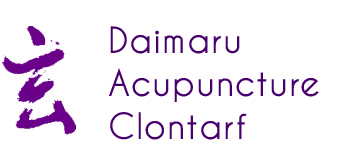

March 11th, 2010 | Posted in 3 Various Specific Problems
ACUPUNCTURE REDUCES CRYING IN COLICY BABIES
The effects of minimal acupuncture on crying due to infantile colic have been tested by a group in Sweden. Forty children (median six weeks of age) with excessive crying unresponsive to conventional therapies, were recruited and quasi-randomised to control or minimal acupuncture treatment. Children received light needling at Hegu L.I.-4 on both hands for approximately 20 seconds on four occasions, or received the same care except needling. Light needling resulted in a significant reduction in the rated crying intensity. Pain related behaviour (e.g. facial expression) was also significantly less pronounced in the light needling group, compared with the control group post-treatment. Parents rated the light needling as more effective in improving symptoms than the control group. (Effects of minimal acupuncture in children with infantile colic – a prospective, quasi-randomised single blind controlled trial. Acupunct Med. 2008 Sep;26(3):171-82).
ACUPUNCTURE FOR KIDS
As part of a paediatric pain management program, acupuncture reduces pain scores by over 5 points on a 10-point scale and improves overall well being, new suggests a new study. Research from the Children’s Hospital and Harvard Medical School, in Boston, Massachusetts, United States, found that acupuncture can be safely and successfully incorporated into paediatric pain management practice. Over a one-year period, 243 children (167 females and 76 males) mean age 14.3 years received an average of 8.4 sessions of acupuncture treatments. At the initial consultation, the chief complaints included pain in the low back, the hips and lower extremities (30%), abdomen (25%), head (23%), neck, shoulder, arm (10%), chest (6%), pelvis (4%), and others (2%). At the end of the six-week treatment period, mean pain scores decreased from 8.3 to 3.3. In addition, patients reported increased school attendance, improved sleep patterns and increased participation in extracurricular activities. (Presented at the 55th Annual Meeting of the American Society of Anesthesiologists Oct.16 2002). Meanwhile a paper in the journal Contemporary Pediatrics has proposed that acupuncture should be used routinely to treat children suffering from chronic pain or nausea. Dr. Kathi Kemper, instructor of medicine at Harvard University Medical School, reports that over half of children with chronic pain that had not responded to orthodox treatment experienced significant pain relief with acupuncture, and that over two thirds of children found acupuncture pleasant rather than painful. The most common reasons the authors recommended acupuncture for children were chronic or severe pain such as migraine headaches, chronic abdominal pain, cancer, endometriosis, nausea and vomiting associated with surgery or chemotherapy. (Contemporary Pediatrics 2002;12:31; UPI).
ACUPUNCTURE & CHILDHOOD CONSTIPATION
Constipation in children accounts for between 10-25% of referrals to paediatric gastro-intestinal clinics. An Israeli study selected children from 3-13 years (median 6 years) of age with constipation of over 6 months duration and gave either true acupuncture at Xingjian LIV-2, Hegu L.I.-4 and Zusanli ST-36, or sham acupuncture (stratum corneum penetration at non-acupuncture points near the real points). Bowel movements per week rose from 1.4 to 5.6 in female patients after 5 true acupuncture treatments, and from 1.4 to 4.2 in male patients after 10 treatments, whilst there was no improvement in males during the sham acupuncture 5-week period, and only a slight improvement in females. (Broide E, Pintov S, Portnoy S, Barg J, Klinowski E, Scapa E. Digestive Disease and Sciences 2001, Vol.46 (6): 1270-1275).
ACUPUNCTURE & BEDWETTING
50 children, aged 9-18 years, suffering from primary persistent nocturnal enuresis (bedwetting) were treated by traditional Chinese acupuncture. Within 6 months, 43 were completely dry and 2 were dry on at least 80% of nights. (Scand J Urol Nephrol 2001 Feb;35(1):40-3). A previous study had shown a 50% improvement in nocturnal enuresis in a group of children treated with two alternating groups of points: i. bilateral Sanyinjiao SP-6, Kunlun BL-60, Taichong LIV-3 and Zhongji REN-3; ii. bilateral Yinlingquan SP-9, Taixi KID-3, Neiting ST-44 and Guanyuan REN-4 (mixed manual and electro acupuncture). (Scand J Urol Nephrol 2000;34:21-26).
